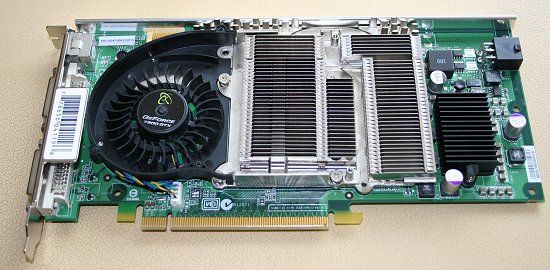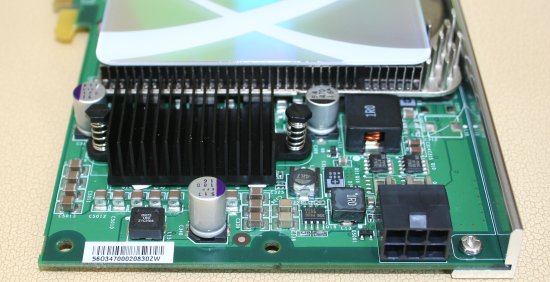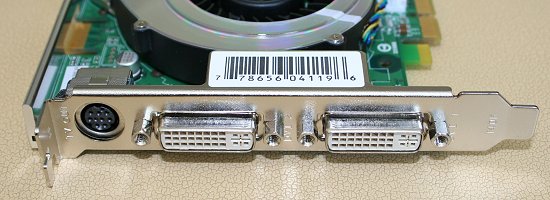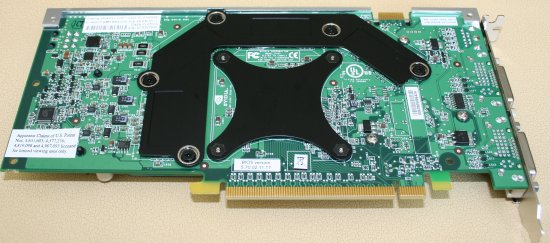XFX GeForce 7800 GTX Extreme Edition card
XFX GeForce 7800 GTX Extreme Edition (PVT70F-UDD7)The last of our review trio is from XFX, formerly known as Pine Technologies.

Ooh, isn't that pretty? A nice holographic-style cooler cover may make XFX's card look the nicest but it's still based largely on the reference design. Everything mentioned before in this review regarding reference layout generally applies here, too.

One area in which the XFX 7800 GTX differs, though, is in shipping with a holding bracket on one side. We've seen the like of Galaxy do this before, and doing so stops the PCB from bending. There's a little cutout that leaves room for the card's SLI connector, should you wish to strap two together in an uber rig.

Slipping off the cover shows the same basic cooling setup as on both other GeForce 7800 GTX cards. Mention is made of the care and attention to cooling here because this is XFX's Extreme Edition 7800 GTX. what's so extreme about it, we hear you ask? Well, for one, it's the fastest-clocked card of the trio, with the core running at 490MHz, or around 14% above default 7800 GTX speeds. Memory, too, sees a hike from an effective 1200MHz to 1300MHz, matching BFG's efforts. XFX Extreme moniker is more than justified here.
So how is it that XFX has managed to market a G70 card with a core speed at 60MHz above default and yet still used reference-like cooling? The answer is, perhaps, two-fold. Firstly, NVIDIA's 430MHz core frequency is on the conservative side. Most retail cards manage close to 500MHz when overclocked, hinting that a super-duper GTX version is eminently possible. Secondly, we're adamant that all 7800 GTX cards can run effortlessly at 450MHz, so XFX has simply paid a premium for the best cores (speed-binned) that hit 500MHz without difficulty. XFX pays more and so do you, with this package tipping the wallet scales at around £450. XFX also markets another 7800 GTX card, codenamed PVT70F-UDF7, that's clocked in at 450MHz core and 1250MHz memory, again with both clocks being above default levels.

A wholly gratuitous shot of the front! The only difference between this and a reference model is the bar running down the right-hand side.

Haven't we seen this arrangement somewhere else before, huh?

XFX uses the same Samsung GC-16 GDDR3 DRAM devices and GPU fan as found on the other two modules, so besides differing clock and memory speeds, there's not a whole lot of innovation going on here.









